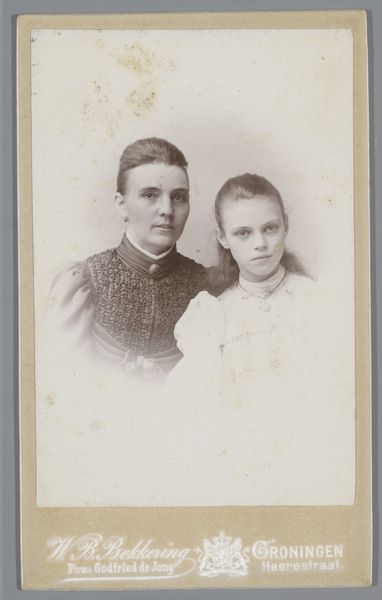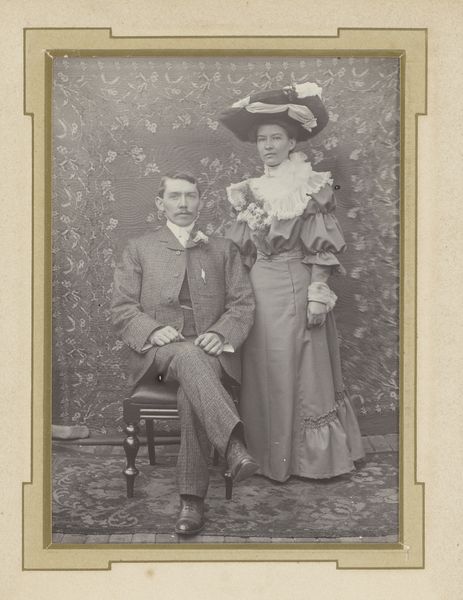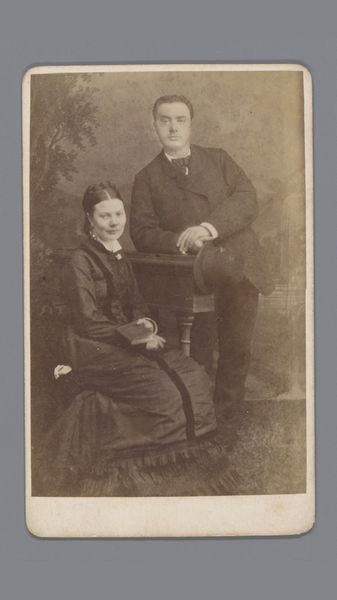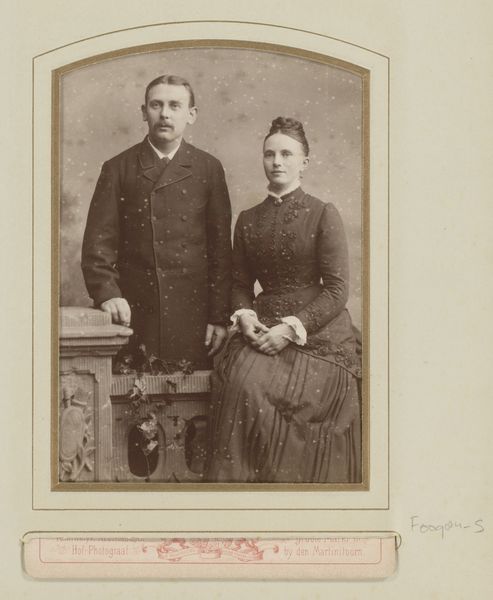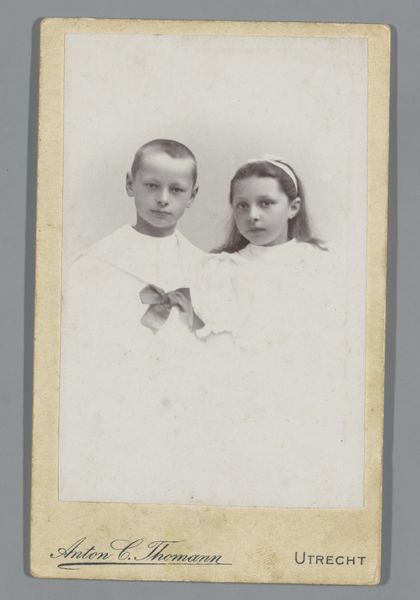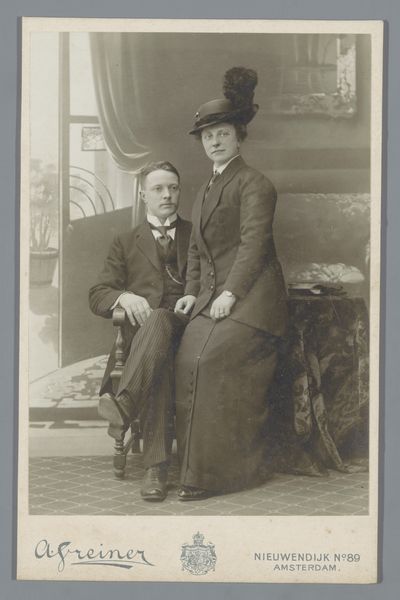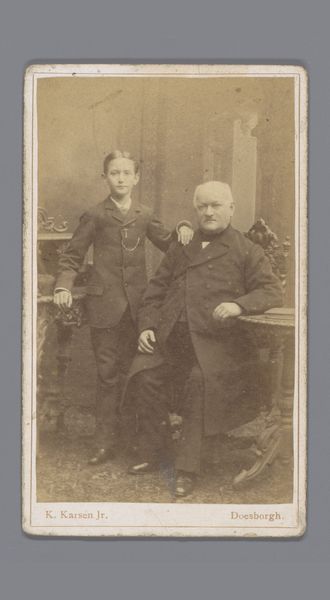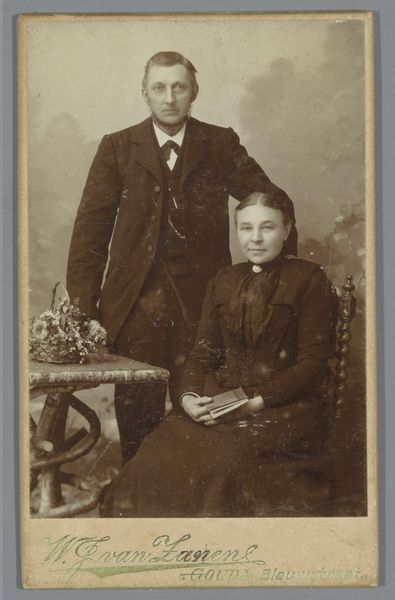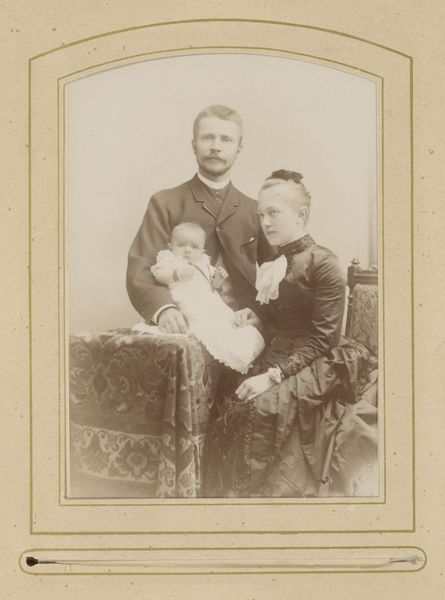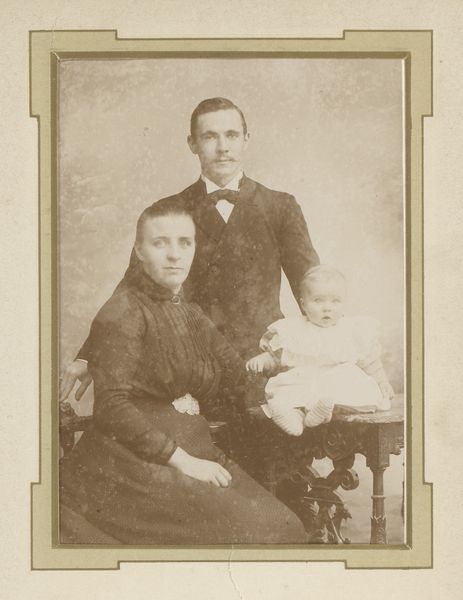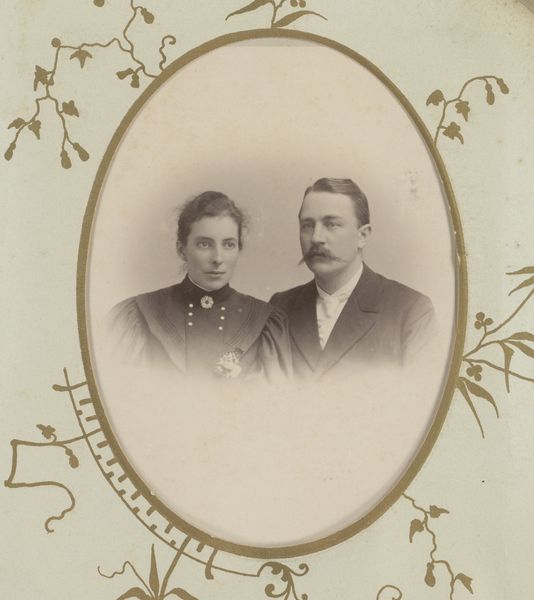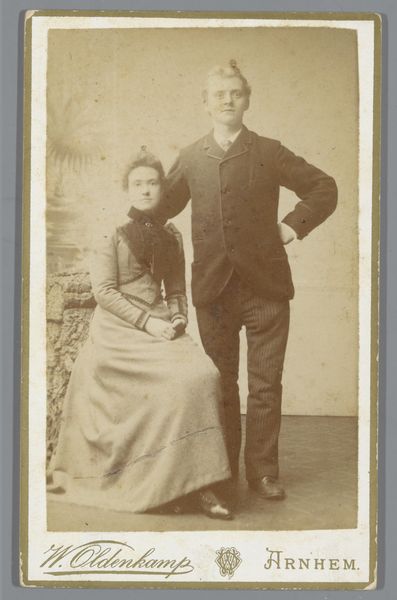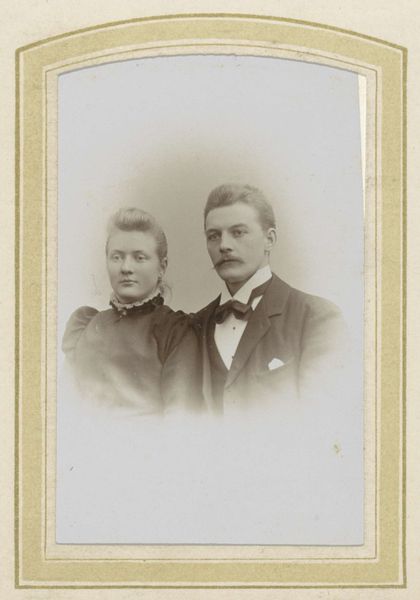
daguerreotype, photography
#
portrait
#
16_19th-century
#
wedding photograph
#
daguerreotype
#
archive photography
#
photography
#
historical photography
#
portrait reference
#
framed image
#
group-portraits
#
19th century
#
ashcan-school
#
genre-painting
#
realism
Dimensions: height 138 mm, width 98 mm
Copyright: Rijks Museum: Open Domain
This is an albumen print portrait of a young boy and girl, made by Heinrich Brinker. The image is created using a photographic printing process that employs the proteins found in egg whites, mixed with a light-sensitive silver compound. This technique involves coating paper with this emulsion, and then placing it in contact with a negative under sunlight, which results in a sepia-toned image. The tonal range and detail depended heavily on the coating and exposure time. This painstaking process reflects a shift in the production of portraiture, transitioning from hand-painted likenesses to mechanically reproduced images. The rise of photography democratized portraiture, though still a costly endeavor for many. The formal attire of the subjects speaks to the social aspirations of the era, made possible by the industrialized production of textiles and clothing. Ultimately, the photograph represents a convergence of chemistry, optics, and skilled labor, capturing a moment in time within the broader context of industrial progress and social mobility.
Comments
No comments
Be the first to comment and join the conversation on the ultimate creative platform.
